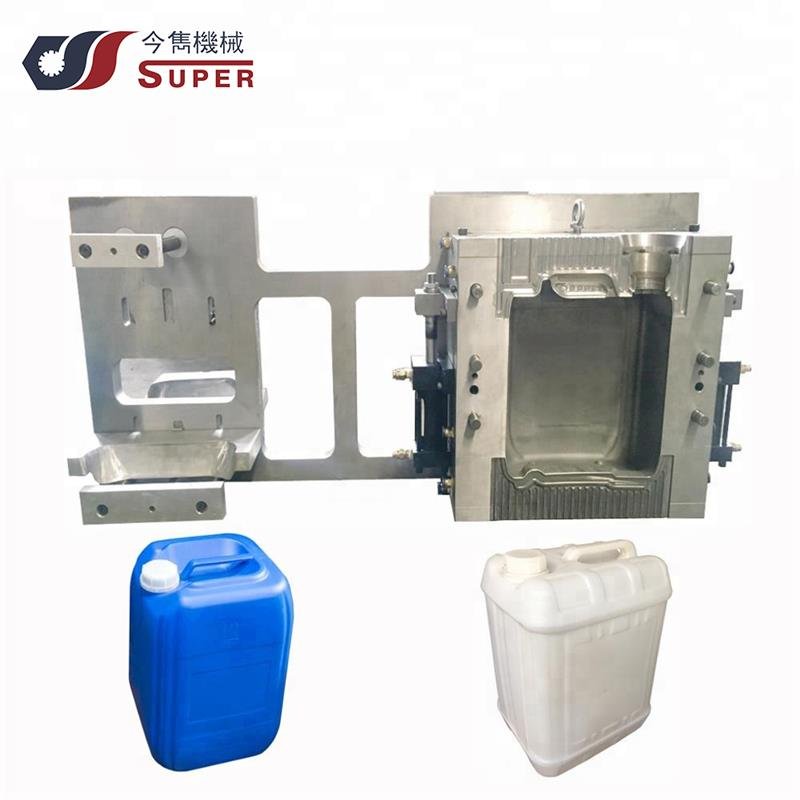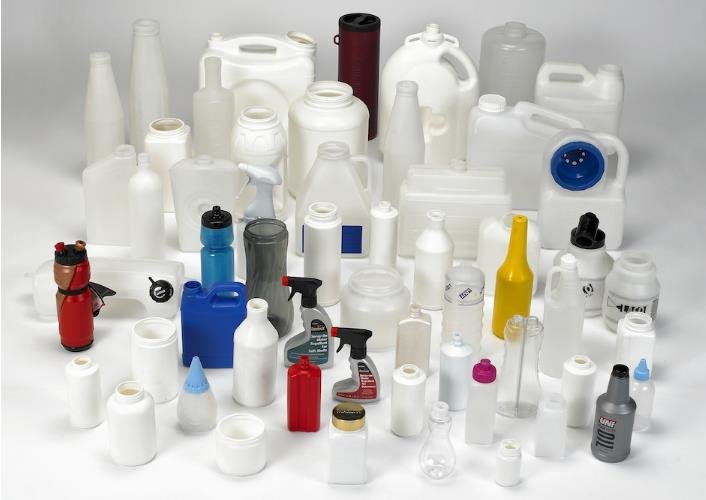Description
Features & Application
Extrusion Blow Molding
- Extrusion Blow Molding is one of several blow molding methods to produce plastic bottles, jars, and jugs. It is a common blow molding technology used to process many different plastics, including HDPE, PVC, PC, PP, and PETG – and very common with bottles requiring multi-layer technologies (bottles with special oxygen / moisture barrier requirements to improve product compatibility & stability).
Steps of EBM Process
- Extrusion Blow Molding is the simplest type of blow molding. A hot tube of plastic material, called a parison, is dropped from an extruder and captured in a water cooled mold. Once the molds are closed, air is injected through the top or the neck of the container; just as if one were blowing up a balloon. When the hot plastic material is blown up and touches the walls of the mold the material “freezes” and the container now maintains its rigid shape.
- For colored bottles, colorants are often fed into the extruder at a controlled rate and mixed with the resin as they are being melted. If barrier and adhesive layers are required, they are fed separately and combined in a co-extrusion head
The Excess
- When a bottle is produced using this blow molding method, excess material is created when the mold closes around the parison. This ‘flash’ must be removed to complete a finished bottle or jar. Flash at the bottom (called the tail), the top (the moil), and for handledware – a “handle slug” needs to be trimmed. Typically, the flash is removed upon mold release (trimmed in mold).
- For bottle with handles (handleware), offset neck and special circumstances, the flash is extracted via a secondary operation downstream. The short video below depicts an EBM process for a wide mouth bottle being produced with it’s flash trimmed downstream.
Secondary Operations
- In addition to removing the flash, secondary (downstream) operations include flame treatment, leak detection, and post mold decorating.
- Flame treatment is sometime used prior to bottle decorating to improve ink adhesion. Leak detection, on the other hand, is always required to ensure the integrity of the bottle before it leaves the production line. If a bottle fails the leak detection test, it is rejected and sent back for regrind.
Advantages of EBM
- There are several advantages of EBM, one of which is lower mold costs compared to ISBM or IBM and the capability of forming handles. Another advantage of EBM is multi layer capability. In some instances, EBM bottles can have up to 7 layers of materials that include virgin plastic resin layers that encase a regrind (PCR) layer, barrier layer, and adhesive layers to bond the other layers together.
Example of Application
- Mold for cosmetic bottles, bottles of fermented yoghurts and mixed milk drinks, container bottles for edible oils.






Reviews
There are no reviews yet.